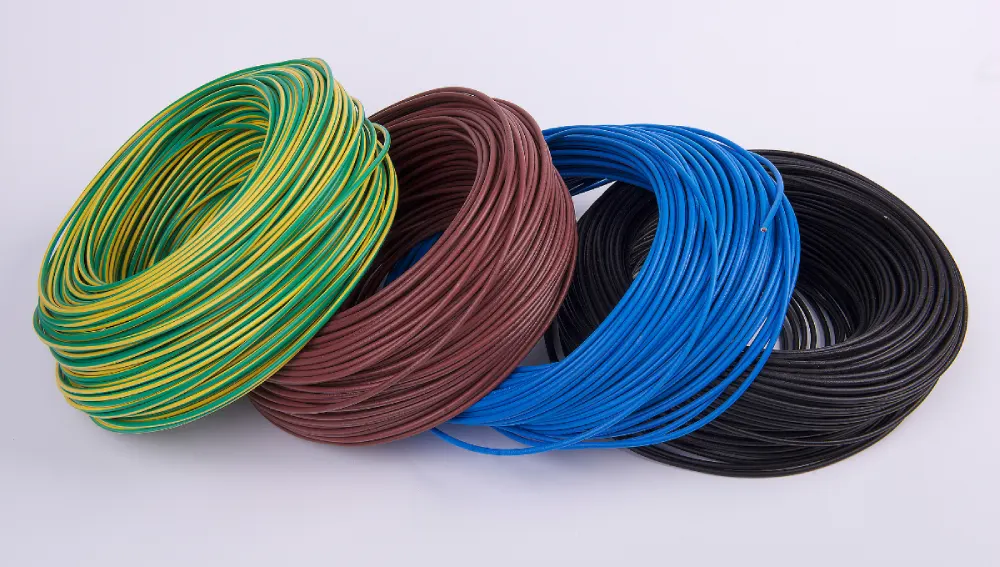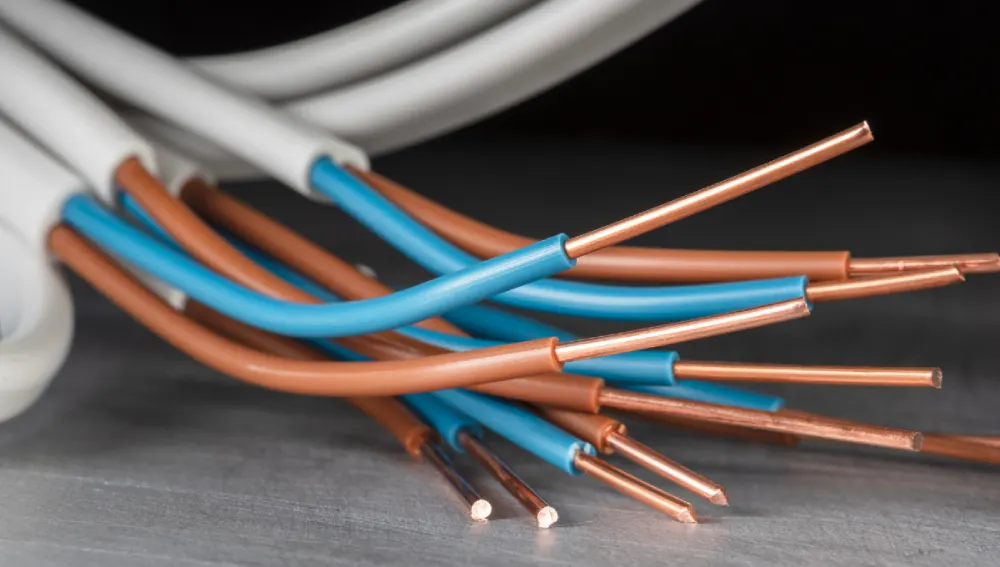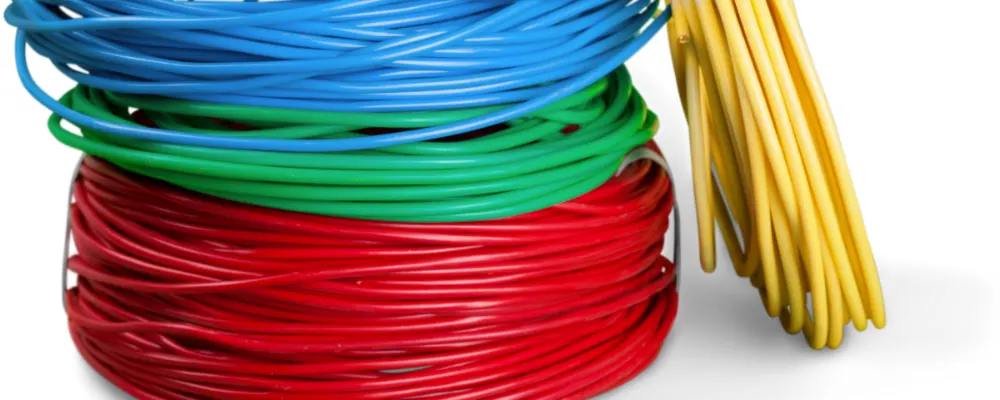Picking the right electric wire for your home matters a lot. It lasts longer, conserves energy, and keeps you safe. This article explains the many kinds of wires, what to look for in a purchase, some technical details, and setup advice. We will not discuss specific brands. Rather, we’ll concentrate on what constitutes a high-quality wire so you may select the ideal one for your project.
- 1 Types of Electric Wires
- 2 Things to Think About When Picking Electric Wires
- 3 Understanding Electrical Conductivity
- 4 Wire Sizing and Ampacity
- 5 Tips and Good Practices for Installing
- 6 Ensuring Proper Connections
- 7 Managing Heat Dissipation
- 8 Guarding Against Physical Harm
- 9 Upkeep and Checking
- 10 Selecting the Right Wire
Types of Electric Wires

To pick the right wire, you need to know what kinds are out there. Each type works best for different purposes
1. Non-Metallic (NM) Sheathed Cable
- Description: NM cables also called Romex, are used in home wiring. They have several wires inside a flexible plastic covering.
- Uses: Great for indoor jobs like wiring outlets, switches, and lights.
2. Armored Cable (AC)
- Description: These cables have a metal covering, which gives them extra protection from physical harm.
- Uses: Good for places that might get damaged, like garages, outdoor or underground spaces and basements.
3. Underground Feeder (UF) Cable
- Description: UF cables are made to be used outdoors, with a strong covering that keeps out moisture.
- Uses: Great for installations underground, like wiring for lights outside and other things buried in the ground.
4. Thermoplastic High Heat-Resistant Nylon-Coated (THHN) Wire
- Description: THHN wire can handle high heat well and is often used in business and factory settings.
- Uses: Works well for both conduit and open-air setups in homes.
5. Copper-Clad Aluminium (CCA) Wire
- Description: Aluminium core in CCA wires has a copper cover; therefore, it is both cost-effective and conductive.
- Uses: These wires find application in situations where weight and cost matter, though they’re not generally seen in homes.
6. Coaxial Cable
- Description: Coaxial cables used to transmit data consist of a central conductor insulation, a metallic shield, and an outer cover.
- Uses: These cables play a crucial role in TV and internet connections but don’t carry electrical power.
Things to Think About When Picking Electric Wires
Choosing the right electric wire requires you to weigh several key factors to guarantee safety and effectiveness:
1. Wire Gauge
- Definition: A Wire gauge denotes how thick a wire is. Lower numbers mean thicker wires that can handle more current.
- Common Gauges: Houses often use 12-gauge wires for outlets and 14-gauge for lighting.
2. Material
- Copper vs. Aluminium: Copper conducts well and resists rust, making it the top pick for most home wiring. However, Aluminium weighs less and costs less but doesn’t conduct as well.
- Consideration: Go with copper for most home jobs unless you need to watch the weight or budget.
3. Insulation
- Importance: Quality insulation guards wires against environmental factors and lowers the chances of electrical fires.
- Types: Materials like thermoplastic and nylon are used to insulate wires providing great durability and protection.
4. Voltage Rating
- Definition: This rating shows the highest voltage a wire can handle.
- Requirement: Make sure your wires can support the voltage of your home’s electrical system to avoid overheating.
5. Environmental Conditions
- Indoor vs. Outdoor: Pick NM cables for indoor use and UF or armoured cables for outdoor or underground setups.
- Durability: Think about wires with extra protection for tough environments, in order to prevent corrosion by natural elements and rodents..
6. Compliance with Standards
- Safety Standards: Check that wires follow local and national electrical rules.
- Certification: In India, certifications or standards are provided by the IS (Indian Standard) code and BIS (Bureau of Indian Standards).
Understanding Electrical Conductivity

How Conductivity Affects Wiring
Electrical conductivity measures how well something can carry an electric current. In-home wiring, conductivity plays a key role in how well the electrical system works.
Copper has excellent conductivity, making it the best choice for most residential wiring. Its high conductivity guarantees that electricity flows efficiently, reducing energy loss and heat creation.
Aluminum Conductivity: Despite the fact that aluminium does not conduct as well as copper, it is nonetheless used in various applications due to its light weight and inexpensive cost.
Conductivity’s Role in Choosing Wires
When picking wires for house wiring, thinking about the material’s conductivity helps make sure the system can handle the expected electrical load. Conductivity has an impact on:
- Energy Efficiency: High conductivity has an influence on energy loss reduction as heat results in more productive energy use and smaller electricity bills.
- System Safety: Good conductivity helps minimisze the chance of overheating, which can cause fires or harm the electrical system.
Wire Sizing and Ampacity
Understanding Ampacity
Ampacity means the highest amount of electric current a wire can handle without getting too hot. Picking the right wire size based on ampacity is key to ensuring safe and effective electrical setups.
- Factors That Have an Impact on Ampacity:
- Wire Gauge: This means that thicker wires (with less gauge numbers) can support more electricity because they have higher ampacity.
- Insulation Type: Wire insulation materials possess varying thermal resistance properties, thereby affecting their ampacities.
- Ambient Temperature: Higher temperatures can lower a wire’s ampacity, so you might need bigger wires or different insulation to stay safe.
Wire Sizing Guidelines
To pick the right wire size, you need to make sure your electrical system can handle the expected load. Here are some basic rules for common home uses:
- Lighting Circuits: 14-gauge wire suits circuits that handle up to 15 amps.
- Outlet Circuits: 12-gauge wire works for circuits that carry up to 20 amps.
- Kitchen Appliances: Bigger appliances might need 10-gauge or even 8-gauge wire, based on how much power they use.
Figuring Out Wire Size
To figure out wire size, think about these things:
- Figure Out the Load: Add up how much current all devices on the circuit use to make sure the wire can handle it.
- Think About Length: Longer wires can lose voltage, so you might need thicker ones to make up for it or shorten the wiring route.
- Check the Rules: Always look at local and national electrical codes to make sure you’re following safety standards.
Tips and Good Practices for Installing
To get the most out of high-quality wires and keep things safe, you need to ensure the following :
- Plan Your Layout: Figure out where you want outlets and fixtures in your electrical system. This helps you work out how much wire you need and what kind.
- Follow Electrical Codes: Stick to local and national rules to keep things safe and legal.
- Use Proper Tools: Get good tools to cut, strip, and join wires. This makes setting up easier and more reliable.
- Label Your Wires: Put clear tags on your wires. This stops mix-ups when you’re setting up or fixing things later.
- Secure Wires: Use clamps and staples to hold wires in place. This stops them from getting damaged or messy.
- Test Your System: After installation has been done start checking with a multimeter and see that all connections have been made properly and there is continuity.
- Hire a Professional: If you think you can’t do installation alone then let the job be done by a licensed electrician. In that way, you will be sure it is well executed.
Ensuring Proper Connections
Strong and correct connections are essential to operate your electrical system. Here are some expert tips:
- Use Quality Connectors: Make sure connectors match the wire size and type you’re using. Pick wire nuts, terminal blocks, or crimp connectors that fit the job.
- Tighten Connections: Loose connections can cause sparking and overheating. Check all connections twice to make sure they’re tight and secure.
- Avoid Overloading Circuits: Make sure each circuit has the right load to prevent overheating. Spread out appliances and fixtures across several circuits as needed.
Managing Heat Dissipation
Proper heat control helps your wiring system last longer and stay safe:
- Give Wires Room to Breathe: Make sure wires have enough space around them so air can move and cool them down.
- Pick Heat-Tough Materials: In hot places, choose wires with insulation that can handle high temperatures to avoid breakdown.
Guarding Against Physical Harm
Shield your wiring from physical damage during setup and after:
- Put Wires in Tubes and Channels: In spots where wires might get knocked around, use tubes or channels to protect them.
- Skip Sharp Turns: Sharp turns can hurt the wire covering and make it harder for electricity to flow. Keep curves smooth when you’re setting things up.
Upkeep and Checking
Regular upkeep and checks keep your electrical system safe and working well:
- Regular Checks: Look at wiring often to spot wear, rust, or damage.
- Update When Needed: Switch out old wires or circuits that can’t handle current power needs.
- Expert Review: Get a skilled electrician to check your system now and then to make sure it’s safe and follows rules.
Selecting the Right Wire
Choosing the right quality wire can be a daunting task. Use the guidelines mentioned above to ensure Electrical Safety Measure and durability. However, it is always advisable to include professionals such as architects and electrical engineers to design the right electrical layout and assure its quality. Always use well-known brands of wires rather than local ones, so that safety is a guarantee.

